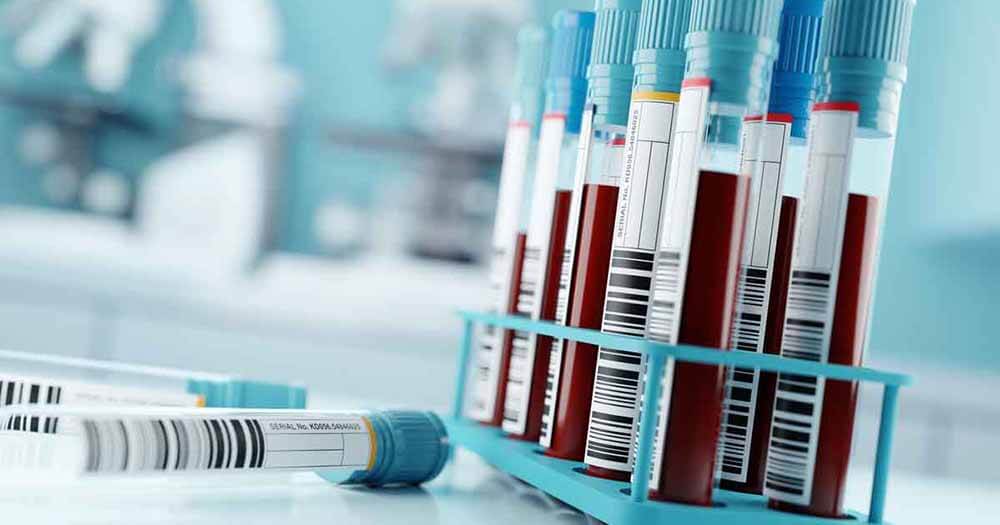Glycated haemoglobin (HbA1c) is the normal measure used to indicate glycaemic control in people with diabetes. The normal HbA1c target is 48 mmol/mol (6.5%), although this is adjusted on an individual basis depending on age and other comorbidities. NICE (2009) guidelines advise clinicians to avoid “pursuing highly intensive management to levels of less than 6.5% [48 mmol/mol, IFCC-aligned]”. This case study will explore an unusually low HbA1c reading resulting from concomitant treatment for a dermatological condition. This effect is not mentioned in the current information supplied to prescribers, but a literature search uncovered three other instances of artificially low HbA1c noted in people with diabetes who were receiving treatment with the antibiotic dapsone. The article will explain the actions taken and suggest caution when monitoring HbA1c in people with diabetes who are prescribed this treatment.
Case report
Mr A was a 55-year-old gentleman with type 2 diabetes of 18 years’ duration who regularly attended our hospital consultant clinic twice yearly. From April 2008 to May 2013, his HbA1c ranged from 57 to 72 mmol/mol (7.4–8.7%) and his weight ranged from 83.0 to 86.7 kg. At a routine clinic appointment in May 2013, an HbA1c of 72 mmol/mol (8.7%) and a weight of 85.4 kg were recorded. His diabetes medication at the time comprised the following:
- Insulin aspart/insulin aspart protamine, 12 units with breakfast and 19 units with the evening meal.
- Metformin 1000 mg twice daily.
- Pioglitazone 30 mg daily.
At his subsequent review appointment in December 2013, Mr A advised that he had recently been diagnosed with dermatitis herpetiformis (DH), a skin condition that is frequently associated with coeliac disease. He had lost 10 kg of body weight, unintentionally, although he was happy with this, and his weight now was 75.2 kg. He had reduced his insulin aspart doses to 10 units with breakfast and 12 units with the evening meal. His HbA1c had improved to 46 mmol/mol (6.4%) and, in view of this and a normal BMI, the consultant advised him to stop pioglitazone. The DSN was asked to review him after 3 months to check his HbA1c and home blood glucose monitoring records.
At the DSN-led appointment in March 2014, Mr A’s pioglitazone had been stopped as planned. Unfortunately, there were minimal home blood glucose monitoring records, but those which were available showed levels of 5.3–12.2 mmol/L, with no hypoglycaemic events reported. His insulin aspart doses were 8 units with breakfast and 12 units with the evening meal. Mr A reported that, since being diagnosed with DH and commencing a gluten-free diet, he had felt much better, was maintaining weight and perceived his home monitoring blood glucose results to be much improved. His HbA1c was checked and was found to be 25 mmol/mol (4.4%). A recent test showed a haemoglobin level of 112 g/dL and he had not had any recent blood transfusions. Dunning and Cukier (2014) have identified a number of factors that can lower an HbA1c reading, including recent blood transfusion, some forms of anaemia and high doses of vitamins C and E. None of these were relevant in this case.
The results were discussed with the consultant and no clear reason could be determined for the exceptionally low HbA1c. Mr A was asked to check his blood glucose levels before meals and 2 hours postprandially for 24 hours to ascertain whether he was having hypoglycaemic episodes. This revealed blood glucose levels of 5.7–12.9 mmol/L, with no hypoglycaemic events or symptoms reported.
Effects of dapsone
A literature search was undertaken using the words “low HbA1c” and “diabetes”, which identified an article by Unnikrishnan et al (2012). The article relates to two people with diabetes, both of whom had been commenced on dapsone, one for lepromatous leprosy and the other for scaly patches on his forearms and legs. The authors stated that dapsone is used in the treatment of Hansen’s disease and dermatological conditions such as DH, and that:
“Dapsone is known to induce hemolysis, which can lower the HbA1c by reducing red blood cell lifespan. Dapsone may also promote the oxidation of hemoglobin to methemoglobin, thereby interfering with the high-performance liquid chromatography assay used to detect HbA1c. Dapsone has also been shown to reduce the lifespan of red blood cells independent of its hemolytic effect.”
In a second article relating to a gentleman with type 2 diabetes who received dapsone for leukocytoclastic vasculitis, Lai et al (2012) also concluded that dapsone may be the cause of artificially low HbA1c.
These findings prompted the author to re-examine Mr A’s medical records, upon which it was discovered that, in November 2013, he had been commenced on dapsone 50 mg daily. After discussion with the consultant, it was agreed that dapsone was probably the cause of the unexplained low HbA1c.
Caution is required by clinicians in interpreting the HbA1c results of people on dapsone, as the values are dependent on the lifespan of erythrocytes and the assay method used for testing. Clinicians may need to consider a fructosamine (glycated serum protein) test to assess overall glycaemic control. At present, as Mr A is due to be treated with dapsone for at least 1 year, we are unable to ascertain the agent’s effect on HbA1c levels until after it has been discontinued, but we will consider this in the future.
The British National Formulary (BNF, 2015) makes no specific mention of dapsone’s effect on HbA1c levels; however, under cautions, “susceptibility to haemolysis including G6PD deficiency” is mentioned. The dermatology specialist nurses within our Trust were informed of this information, and it was subsequently passed on to the consultant dermatologist. The findings were shared with all consultants and DSNs working within the Trust, and Mr A’s GP has been informed.
Implications for practice
This case report demonstrates the importance of all prescribers being aware of the interactions certain drugs can have on blood results. As in this case, dapsone has the potential to cause abnormally low HbA1c levels and, therefore, caution is required when interpreting this measurement. The findings also suggest that HbA1c alone should not be used to diagnose diabetes in people who are currently taking dapsone, as the reading may be abnormally low and the diagnosis may be missed.
Conclusion
Dapsone is an antileprotic drug indicated for use in leprosy, DH and Pneumocystis jirovecii (Pneumocystis carinii) pneumonia (BNF, 2015). Clinicians who prescribe this medication for people with diabetes should consider advising them that they may develop an abnormally low HbA1c. The clinician should also inform the individual’s diabetologist, DSN and GP that the drug has been prescribed and warn about the possible effects it can have on HbA1c readings. As HbA1c levels are dependent on the lifespan of erythrocytes and the assay method used, they can be affected by the use of dapsone; therefore, other methods of assessing glycaemic control need to be considered, such as a fructosamine (glycated serum protein) test and home blood glucose monitoring.




Study provides new clues to why this condition is more aggressive in young children.
14 Nov 2025